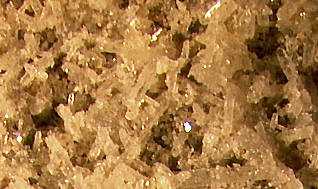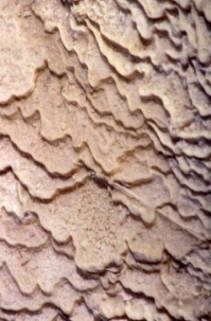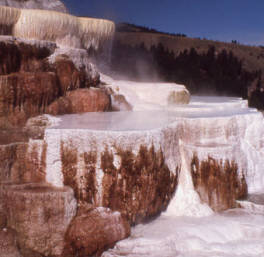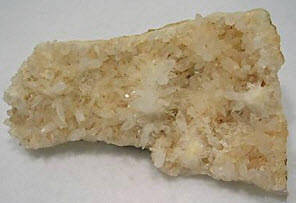
Best Website for Herkimer Diamond Information
Last Updated:

About this Webpage:


Free Website Where Herkimer Diamond Enthusiasts Share Information with the Public
Scroll down
Dr.C. did two talks at the Herkimer Diamond Festival (July)which are in a Youtube movie. The research on the Herkimer District is in need of samples and photos.
How can you help? Visit the "how to help" page.



The term "hydrothermal activity" simply means that hot fluids flowed through the rock and left some evidence that they did. Yellowstone National Park (photo on the right, Dr. C. 1983) is an example of hot fluids flowing through rock. Obviously geysers are not part of the current Herkimer mining district at present. The question is "did hot fluids flow through the Herkimer host rock in the past"?
If hot fluids did flow through the rock then some evidence would be left behind, if it hasn't been erased by the actions of weather or man. On this web page is presented such possible evidence. It is expected that, with the help of those in the field, additional samples and photos will be added to this evidence.


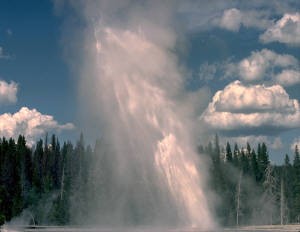
If hot fluids moved through the Herkimer district then these fluids would have left "signs" in the rock. The most obvious of these signs is highly altered rock, rock that has been changed by the hot fluids. Is there evidence of this in the Herkimer mining district?
Photo 1: Very bleached white rock, almost like pumice and nicked named that by some miners. This is a 3 foot wide boulder moved during heavy equipment work at DA, 2009.
Photos 2 and 3: The edge of a vug with a rounded phase 1 calcite (from TCR, 2010). You can see the leaching texture at the arrow where many holes can be seen. A close up of this texture is seen in photo 3.
Photo 4: In some instances the leaching of the rock is so intense that there is no rock left behind, just a skeleton of quartz. Imagine the material in photo 3 with all of the brownish red rock gone. Sample from TCR, donated by the mine owners, 2010.
Photo 5: This shows the intense leaching that is often seen with the baby floater druze phase. Note how "crumbly" the rock looks just left of the label. See also the baby floater page.
Is there evidence of a form of quartz in the Herkimer district that we have seen elsewhere in New York associated with hydrothermal activity (Ellenville, NY see photo below right)?
Below left is a photo of needle druze (blue arrow) over the common pyramidal druze (white arrow). Note the etching (or hydrothermal leaching) of the earlier quartz. The pyramidal quartz does not look like much other than a bunch of grey blobs. The sharp brilliant faces are mostly absent (see the druze page for unaltered druze photos). This druze, much like a pile of sticks (see close up), rare for the Herkimer District and was found near a zone of intense hydrothermal leaching.
In Illion NY, just a few miles west of Herkimer, is an area that has the remains of travertine like material - as seen in the photo below. Photos to the right and left are from active hydrothermal hot springs in Yellowstone.
W. David Hoisington, Ph.D.
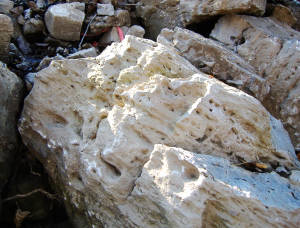
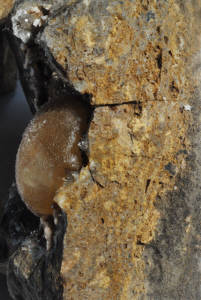
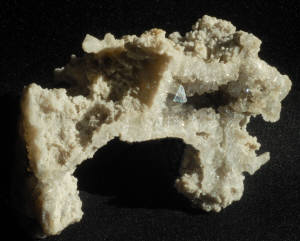
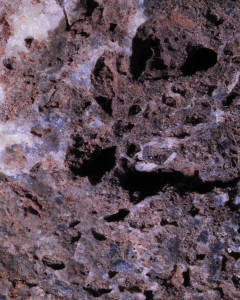
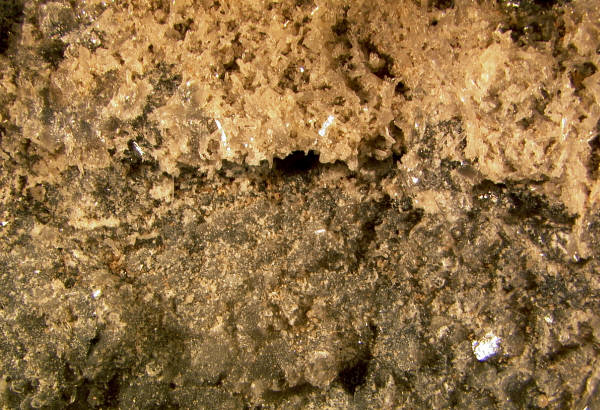

Laboratory Evidence

The paper above is an important piece of research that indicates mineralization episodes occurred before and after the Herkimer diamonds. This is similar to the field evidence in the Herkimer deposits (see minerals link at the top of the page). In addition the researchers suggest that the Herkimer diamonds and the the formation of anthraxolite are linked to later fluids with a temperature at about 200 degrees C. Given the variation in the intensity of host rock alteration that is observed in the field, it could be that the temperature (and or the chemistry) of the fluids varied across the district. It may be that the fluids were hotter closer to the source and thus created a stronger alteration effect. This is consistent with a hydrothermal model.
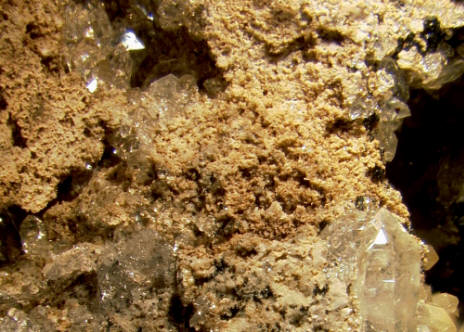

Needle Druze Evidence

Travertine Evidence

Heavily Altered Rock Evidence
Aug., 2014
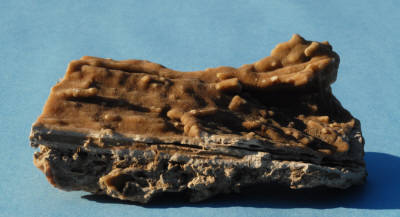

Evidence for Fluids Following Fractures
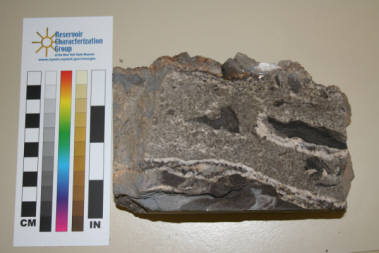
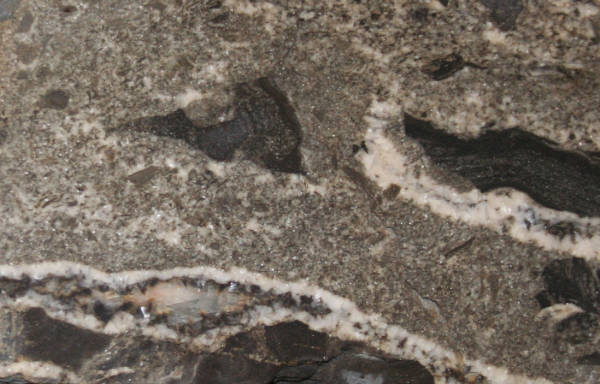
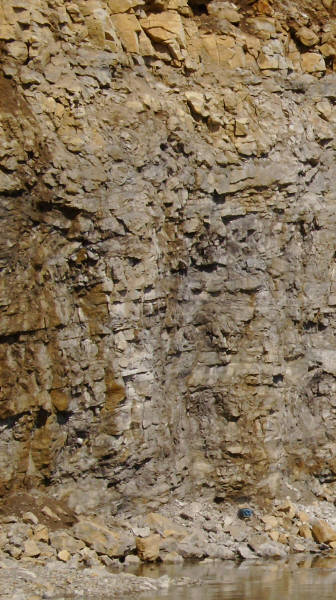
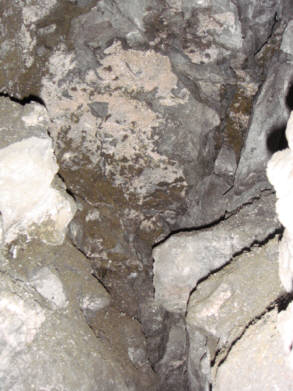
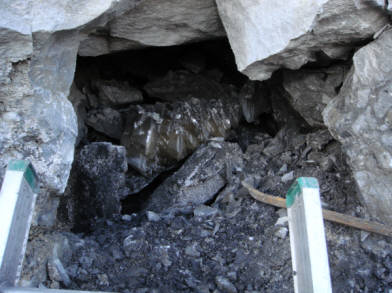
Man

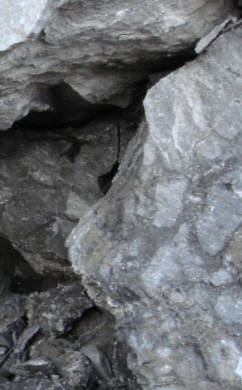
The Hanson-Benchmark Quarry is the only place in the Herkimer district where you can see a large vertical section of mineralization (see the small seated man for scale) that is also minimally affected by weathering. The photo on the left (donated by Bob, 2010) shows vertical fracture zones running from below 1, where some pockets are, up to 2 where you can see multiple veins, and then up to 3.
When the vein intersects a porous rock layer a pocket develops as shown in the photo on the right. The vein runs from point 1 to point 2 which is a distance of about 3 feet. Note the planar nature of the pocket as it follows the vertical fracture zone. The walls of this pocket are lined with dolomite crystals and the brown in the bottom of the pocket is marcasite.

Other Field Evidence
Photo donated by Brian Slater, 2009.


Summary and Conclusions
The evidence for the hydrothermal model as the origin for the fluids that helped to grow the Herkimer diamonds is based on the following:
1: Fluid inclusion work on Herkimer diamonds that places the temperature in the range of 200 degree Celsius.
2: Fluid inclusion work on dolomite mineralization from the NY region that places a temperature in the range of 140 to 170 degrees Celsius (work by Bruce Selleck from Colgate University).
3: Oxygen isotope analysis on the dolomite mineralization in the NY region that indicates that NO meteoric (surface) water (or supergene water) was involved (work by Bruce Selleck from Colgate University).
4: Research done at the quarry in Palatine indicating hydrothermal mineralization along fractures parallel to faults with fluid inclusion temperatures around 150 degress Celius (work by Brian Slater from NTSM).
5: Mineralization along vertical fracture features at HBQ including the occurrence of vertical pockets.
6: Description by miners of vertical pockets cutting across layers in the Fonda region.
7: Intense leaching and alteration in the Fonda region.
8: Unusual occurrence of "needle druze" with etching of previous druze.
9: The occurrence of travertine deposits in Illion.
10: The occurence of "quartz spheres", which is some of the best evidence for the intrusion of quartz solutions into hydrocarbon.
The prevelance of vertical fluid flow, in combination with horizontal fluid flow, helps to explain why the pocket features at AD are so different from those seen at DA. It is likely due to the difference in the amount of influence of horizontal fluid flow versus vertical fluid flow in combination with a difference in the mineral forming history (paragenesis).
Parallels can also be drawn between the dolomitized carbonate hosted hydrocarbon deposit that is the Herkimer district and other similar hydrocarbon deposits, including the gas deposits in the Finger Lakes region. In the Finger Lakes, not far from the Herkimer district (geologically speaking) the information suggests that fluids moved up along faults to create the mineralization seen in the host limestone.
Laboratory analysis on dolomite mineralization from the region - work by Bruce Selleck
